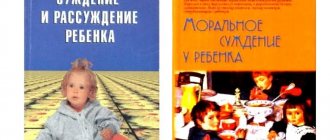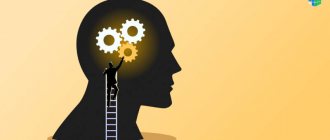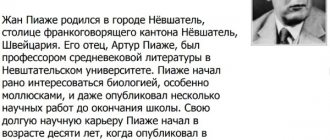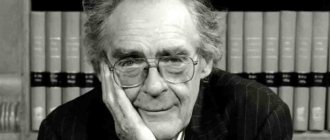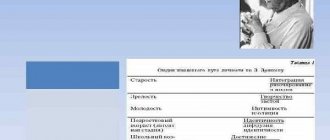Piaget's theory was created by a Swiss psychologist who dealt with issues of cognitive functions and intellectual development of children. Jean Piaget developed his own periodization of the formation of the child’s psyche, the main criterion of which was intelligence. He was also one of the first to talk about the close relationship between thinking and speech: the better one is developed, the better the other functions. The central direction of intellectual development is the formation of cognitive functions, which, according to the author, determine the overall development of the child.
What did Jean Piaget find out?
In short, Jean Piaget developed his theory of personality development by processing intelligence tests of people of different ages. I once noticed that some children make the same mistakes that are not typical of the older generation. This led him to believe that children's cognitive processes and ways of thinking differ from those of adults. After some time, he developed a theory according to which people at the same stage of development have similar general forms of cognitive and cognitive abilities.
Centering
Centering is the act of focusing all attention on one characteristic or dimension of a situation while ignoring all others. Conservation is the realization that changing the appearance of a substance does not change its basic properties. Children at this stage do not know about conservation and exhibition concentration. Both centering and conservation can be more easily understood by experiencing the hypothesis in practice. And you can do this by simply watching your children after reading this article.
Piaget's stages of development
Jean Piaget developed his theory of intellectual development, which includes 4 stages.
Sensorimotor stage (0-2 years)
At the first stage, according to J. Piaget’s theory of cognitive development, two areas develop to a greater extent: sensory and motor. At this age, children begin to understand at a primitive level the relationship between their actions and their consequences. Children explore the world around them through motor skills and sensory organs, gradually expanding the range of ideas about objects and objects of existing reality.
The baby starts with simple actions, but gradually complicates them, using trial and error to form concepts about himself and the objects around him. This stage involves only actions with specific objects; a child of this age is completely incapable of perceiving symbols. During this period, the baby gradually develops the organization of motor and perceptual interactions with objects and objects surrounding him. By the end of the stage, a coherent system of sensorimotor actions in relation to the objective environment is formed.
The sensorimotor stage of development in a child can be clearly seen, for example, when a 1-2 year old child plays with a sorter. He assembles it solely by trial and error, chaotically trying to insert the figure into different slots until he finds the right one.
Preoperative stage (2-7 years)
The child gradually begins to use symbols and speech. He has the opportunity to imagine and describe images and objects using words. But, according to the cognitive theory of development, these should be visible, concrete objects with which you can actually perform any actions. The child is not yet fully aware of the reversibility and irreversibility of some processes and phenomena. For example, in order to find out whether it is possible to connect a piece of chalk broken in half, he needs to do the operation itself: break it and see, try to connect it. Another example is assembling a pyramid. If in the sensory-motor stage the baby tries to put the rings in order by trial and error, then in the preoperative period he puts them next to each other to compare the size.
This period is also, according to the constructivist theory of Jean Piaget, characterized by egocentrism - a phenomenon in which a child cannot mentally imagine an object from the point of view of another person. For example, when playing hide and seek, the baby simply tightly covers his face with his palms or hides only his head under the table. He does this not because he wants to amuse the adults, but because his thinking is structured differently: he is really sure that if he doesn’t see anything, then the same thing is happening to others at that moment.
At this age, children are able to classify objects according to certain characteristics and solve specific problems related to actual relationships between people. But they find it difficult to express their thoughts in the form of words.
Stage of concrete operations (7-11 years)
A certain logic and consistency appears in the child’s thinking. At the same time, it remains quite rigid, that is, not flexible enough. The child cannot yet think of several ways to solve a problem at once, does not understand abstract concepts and hypothetical assumptions. The baby can already mentally imagine some simple processes. For example, he does not need to break the chalk in order to understand that it will no longer be possible to put the two halves back together: he can imagine it in his mind. Another example is a pyramid, the sizes of the rings of which the child already compares mentally, without resorting to actually applying them to each other.
Formal operations stage (after 12 years)
This is a form of thinking that remains with a person until the end of his life. From the age of 12, a child gradually acquires flexibility of thinking, becomes less and less confused about the causes and consequences of occurring phenomena, and begins to think logically, coherently and consistently. The ability to think abstractly and hypothetically appears, considering existing reality as just one of the options for what could be in theory. A person thinks in sentences and establishes formal relationships between them. Learns to systematically identify the variables that are essential to solving a problem and sequentially go through all possible combinations of them.
The age boundaries of the stages, according to J. Piaget’s theory of mental development, may shift slightly depending on the individual psychological characteristics of the child, but in order to form an adult type of thinking, it is necessary to go through all stages of its development.
Story
Piaget was born in Switzerland in the late 1800s and was a child prodigy who published his first scientific paper when he was just 11 years old. His early exposure to the intellectual development of children came when he worked as an assistant to Alfred Binet and Theodore Simon as they worked to standardize their famous IQ test.
Much of Piaget's interest in children's cognitive development was inspired by his observations of his own nephew and daughter. These observations strengthened his venerable hypothesis that children's minds were not simply smaller versions of adult minds. Until this point in history, children were largely viewed as simply smaller versions of adults. Piaget was one of the first to determine that the way children think is different from the way adults do it. This is a great merit of Piaget's periodization.
Basic concepts of Piaget's theory
- A pattern of action or thought. According to the psychological theory of intelligence by J. Piaget, these are categories of knowledge that determine a person’s understanding and interpretation of the world around him. The schema includes knowledge and the process of obtaining it. When receiving a new experience, the child either acts and thinks according to a scheme already existing in his mind, or modifies it, or replaces it with a qualitatively different one.
- Assimilation. This is the process of incorporating new knowledge into existing patterns. For example, a child knows that there is a dragonfly: an elongated body, fast wings, and can fly. Seeing a helicopter for the first time, he will exclaim: “Mom, look, a dragonfly!” Because a helicopter, by all indications for a child, fits this category: long, fast, flies. That is, he built a new concept into his already existing scheme of thinking.
- Accommodation. This is the process of changing or replacing an existing scheme to suit new conditions. For example, a child can hold a spoon, but in his fist. Adults begin to demand and teach him to do it correctly, placing cutlery between his fingers. The baby gradually has to completely change his pattern of actions: the muscles involved and hand movements change, only the goal remains stable - to bring the spoon to the mouth.
- Balancing. Jean Piaget emphasized that in the child’s psyche a healthy balance must be maintained between the processes of assimilation and accommodation, since when the first predominates, the child’s behavior and thinking becomes rigid, and the second becomes inconsistent and disorganized. The successful intellectual development of a child at all stages of the formation of thinking depends on the balance of assimilation and accommodation.
Philosophical and theoretical foundations
Piaget's theory notes that reality is a dynamic system of continuous change. Reality is defined by reference to two conditions. In particular, he argued that reality includes transformations and states.
Transformation refers to all the ways a thing or person can undergo changes. States refer to conditions or phenomena.
People change in their characteristics as they grow older: for example, a baby does not walk or run without falling, but after 7 years, a child's sensory-motor anatomy is well developed and now acquires new skills faster. Thus, Piaget's theory states that if human intelligence is to be adaptive, it must have functions to represent both the transformational and static aspects of reality.
He proposed that operational intelligence is responsible for representing and manipulating dynamic or transformational aspects of reality, while imaginative intelligence is responsible for representing static aspects of reality.
How is children's thinking related to speech?
There is a direct relationship between a child’s thinking and speech. In order to learn to operate with words, sentences and abstract concepts, it is necessary to master speech. The faster and more actively speech develops, the better the quality of thinking develops. Feedback also takes place: the better developed thinking, the more coherent, logically structured and correct speech.
Balancing
Piaget believed that all children try to find a balance between assimilation and accommodation, which is achieved through a mechanism called equilibration. As children progress through stages of cognitive development, it is important to maintain a balance between applying prior knowledge (assimilation) and changing behavior to accommodate new knowledge (accommodation). Balancing helps explain how children can move from one stage of thought to another. This, in short, is the essence of the periodization of intellectual development according to J. Piaget.
My recommendations for parents
- When building a child’s development plan, pay attention to his age and work in accordance with it. For example, there is no point in teaching a two-year-old to read: he is not able to perceive symbols, but is ready to work only with specific examples.
- At each stage of development, it is worth presenting the child with as wide a range of age-appropriate activities as possible. For the baby - different sorters, pyramids, large insert puzzles, so that he can fully practice his trial and error technique. You can choose more complex toys of this type for a preschooler, and also help him overcome egocentrism by demonstrating different points of view. For younger schoolchildren, logic puzzles that involve concrete, familiar subjects and objects are perfect, and for teenagers, problems of an abstract and theoretical nature.
- If you have speech difficulties, try to develop thinking with the help of different games, toys, exercises and age-appropriate techniques. If there is a suspicion that the child does not think well enough for his stage of development, then it is worth trying to influence cognitive processes through speech: ask mental problems in accordance with age, offer to look for the causes and consequences of various phenomena, classify, imagine the probable outcomes of a particular event .
Clarifications
It is important to note that Piaget did not view children's intellectual development as a quantitative process. That is, children do not simply add more information and knowledge to their existing ones as they get older. Instead, Piaget suggested that there are qualitative changes in the way children think as they gradually move through these four stages. A child at age 7 not only has more information about the world than at age 2; there is a fundamental change in the way he thinks about the world. This is the main criterion for Piaget's periodization.
